Sauté Pan vs Frying Pan: Which is the Best Cookware to Use?
Primal Edge Health participates in the Amazon Services LLC Associates Program and other affiliate programs and therefore, may collect a share of sales or other compensation from the links on this page. This comes at no additional cost to you, and all the prices and availability are accurate at the time of publishing.
I’ll share a head-to-head comparison examining a sauté pan vs. a frying pan to help you see which option is better for home cooks. It can be hard to tell which is which between these two cookware, especially if you’re inexperienced in the kitchen.
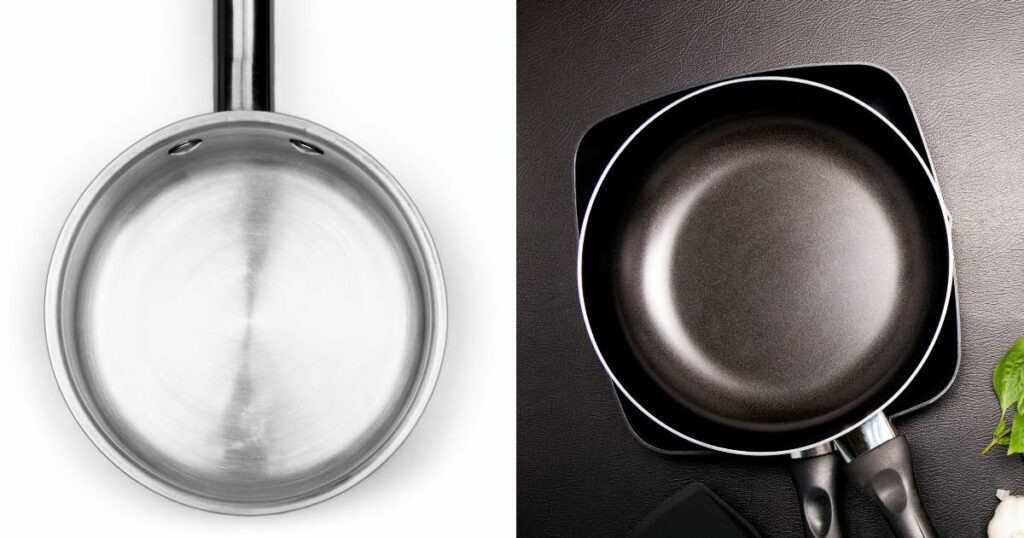
Table of Contents (click to view)
Are a Sauté Pan and a Frying Pan the Same?
A sauté pan and frying pan (also known as a fry pan and skillet) are two terms people often use interchangeably. On top of that, the pans look very similar, which makes it even more confusing, especially if you’re inexperienced in the kitchen and aren’t yet familiar with how to use these tools.
In short, a sauté pan and a frying pan are different. They have different designs, accessories like lid and handle options, and features like weight, volume, and heat distribution. Additionally, you’ll use these pans for different purposes in the kitchen because their surface area and overall build vary. Finally, their price can also be different.
Sauté pans are often made from different materials like ceramic, copper, and stainless steel. They don’t usually come in a wide variety of materials like frying pans or skillets do. Frying pans are typically made from stainless steel, cast iron, ceramic, aluminum, and copper.
This post may contain affiliate link(s). As an Amazon Associate, I earn from qualifying purchases. See Disclosures.
Differences: Sauté Pan vs. Frying Pan
You’ll need the right pan for an optimal cooking experience and the best results in cooking foods. You may think, “What difference does it make when they’re both pans?” Since the answer isn’t as obvious as figuring out the main difference between cast iron cookware, it’s worth diving into with detail.
Yes, they look the same and are often referred to interchangeably, but their differences can affect your cooking experience and performance. Unlike frying pans and skillets, which are inherently the same, saute pans and frying pans have distinct differences. Let’s take an even closer look at each of the pan’s features so you can be confident in purchasing the kitchen tool you need.
|
Primary Rating:
4.7
|
Primary Rating:
4.5
|
|
|
$44.95
|
|
Pros:
|
Pros:
|
|
Cons:
|
Cons:
|
- Wider range of cooking techniques
- High sidewall for sauces and liquid
- Effective with a high volume of ingredients
- Larger cooking surface
- Helper handle
- Lid
- Not good for flipping pancakes, eggs, etc
- Can be heavier
- Heats up more slowly
- Meets basic daily cooking needs
- Ideal for flipping pancakes, eggs, etc
- Best for quick cooking
- Lightweight
- Easy to clean
- Less versatile
- Smaller volume
- Smaller cooking surface
Uses
When choosing between a sauté pan vs. a frying pan, one of the first things you should consider is its versatility. What can you cook in a sauté pan that you can’t cook in a frying pan? Which one can make your cooking experience better?
In terms of versatility, a sauté pan seems to have many uses. You can sauté, braise, sear, poach, and stir-fry. It’s also suitable for shallow frying and pan frying. What I like about sauté pans is that you can even use them for oven cooking! This is a great tool for one-pot meals.
Additionally, sauté pans often have a lid that traps the heat and moisture. This feature speeds up the cooking process and provides the needed environment for braising, searing and simmering. You can’t achieve the same thing in a frying pan.
On the other hand, a frying pan is used for stir-frying, sautéing, and pan-frying. Its shallow sides and flat cooking surface make cooking with these methods a breeze. This lets you cook quick and easy skillet dinners and other one-pan dishes.
I especially like this cookware for making breakfasts like cream cheese pancakes, omelets, and frittatas. The sloped sides make flipping pancakes and eggs an easy job.
Cost
The cost of a fry pan and a sauté pan can vary. Prices will depend on the material it’s made of, size, and brand.
Generally speaking, frying pans cost less than sauté pans. This is because frying pans have a smaller build and use less material. The Cuisinart 12-inch skillet is one of the most affordable yet high-quality frying pans I’ve tried. I’ve been a long-time user of the Cuisinart brand and have never been disappointed by their products, customer service, or cooking tips. I grew up with my mom using this brand, and now their products are in my home, too.
Sauté pans tend to be more expensive, but you get a larger and thicker piece of equipment, plus a lid. I recommend Cuisinart’s stainless steel sauté pan. It comes with a lid and a sturdy helper handle. It’s a solid build, but if something goes wrong, you can take advantage of a lifetime warranty. I find it easy to clean and not too heavy for regular use.
There are multiple variables based on material, size, and brand, so price out the best option and pick the combination that works best for you. If you really can’t decide, buy both and test the differences yourself.
Sides
The sides of the pan are one of the key differences between a fry pan vs. sauté pan. If you place them side-by-side, you’ll immediately notice the significant difference.
The sauté pan has straight sides, while the fry pan has curved walls. Because of the straight walls, the sauté pan has a wider base and larger surface area than the frying pan. It’s great for cooking big portions of fish and meat and dishes that require lots of sauce and liquid.
On the other hand, the frying pan is a more shallow pan. Thus, it’s not ideal for cooking food that calls for lots of sauce or liquid. But, one edge it has over the sauté pan is its sloped sides, which make it easier to flip food over while cooking. It’s ideal for frying, searing, and browning meat in hot oil or tallow.
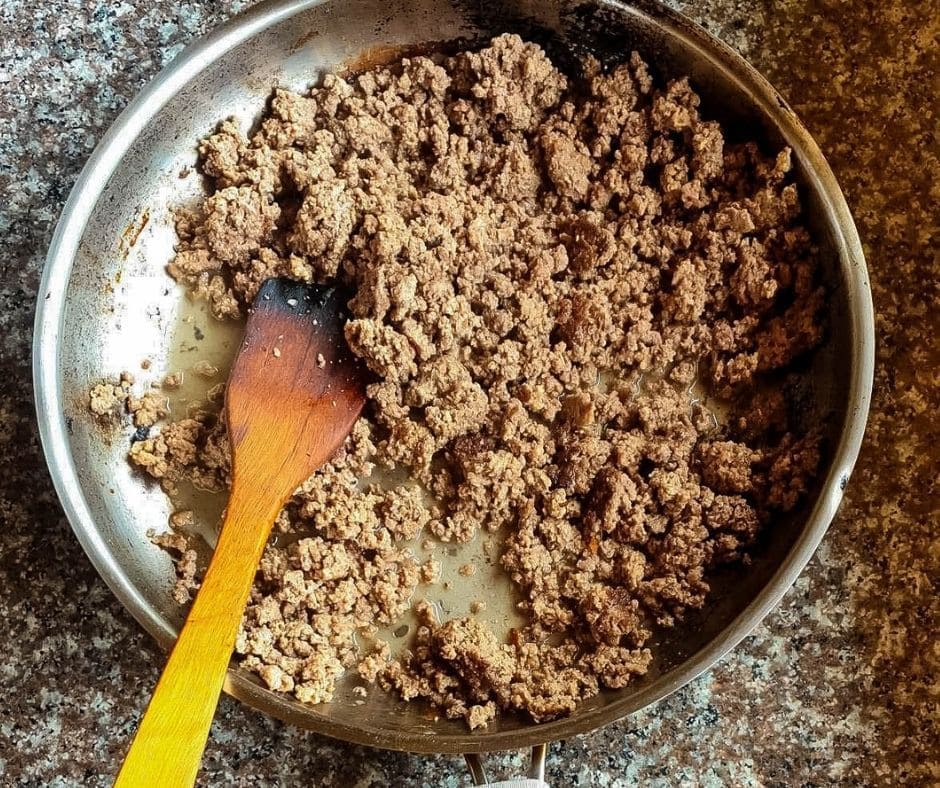
Cooking Surface
Another difference between a fry pan and a sauté pan is their cooking surface. Both a sauté pan and a frying pan have a flat bottom. However, the variation in their sides affects the cooking surface, making it bigger or smaller.
The sloped edges of a frying pan produce a smaller cooking surface. Meanwhile, the vertical sides of a sauté pan yield a large cooking surface.
Another important thing to consider is what the surface is made of. If you want non-toxic cookware, I recommend pans without a non-stick coating like stainless steel, cast iron, carbon steel, or ceramic. Try to stay away from low-quality non-stick pans as they may contain harmful components like PFOA and PFAS.
Handles
Handle design varies between a sauté pan and a frying pan. Fry pans usually come with a longer handle that is ergonomically designed to lift and flip food easily. Additionally, the handle ensures that your hands are kept at a safe distance away from the heat.
Larger frying pans may also come with a smaller helper handle which makes lifting a full pan more manageable. This helper handle is not a usual feature but can be sought out.
On the flip side, the sauté pan typically comes with two handles – a main long handle and a helper handle on the opposite side. A sauté pan’s main handle is shorter than a frying pan’s. Despite that, it gives you better stability and control when you need to lift the pan.
Height and Volume
The height is also one of the things that make a frying pan and sauté pan different from each other. A sauté pan tends to have higher sidewalls, while the frying pan is shorter. However, you might need to place them side-by-side or get out a measuring tape to compare their height because it’s not always obvious.
Since the sauté pan has higher walls, it’s deeper and can hold a larger volume of cooking ingredients. Meanwhile, the frying pan is shallower.
Heat Distribution
Knowing how the heat distribution differs between a sauté pan and a frying pan is important. This can make or break your success.
The sauté pan is usually thicker, heavier, and larger than the frying pan. This makes it distribute the heat slowly but evenly. Its heavier and thicker build also gives it a better heat retention. That said, I recommend the sauté pan for slow cooking.
On the contrary, the frying pan is smaller and has a lighter build than sauté pan. Thus, it distributes heat quickly. It’s great for quick recipes like lemon pepper pork chops that you can pan-fry in just a few minutes.
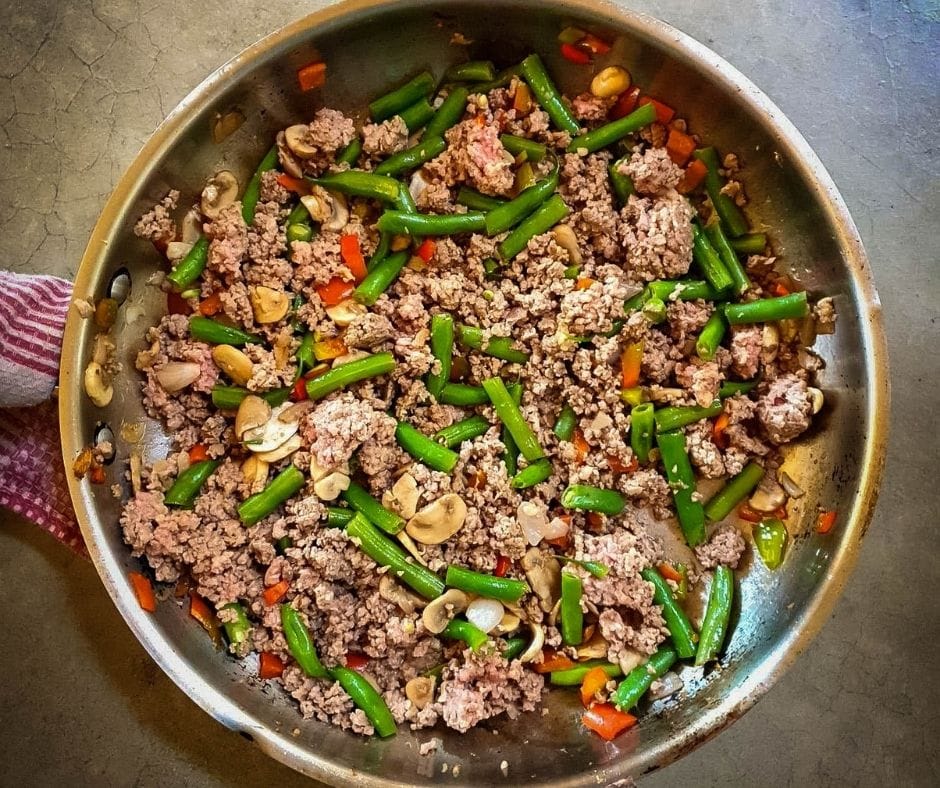
Weight
All in all, one isn’t more than slightly heavier than the other, so this point usually isn’t a deal breaker. Given the higher sides and thicker build, the sauté pan is a little heavier than a frying pan. Having a helper handle and using a lid increases the weight, too.
Tossing Ability
Tossing food while cooking ensures that the contents of the pan are evenly cooked and don’t stick to the bottom. If you’re looking for a pan with the best tossing ability, the frying pan is for you.
The frying pan has sloped sides. It is also lighter because it typically doesn’t have an extra handle. This makes tossing like a chef a breeze while cooking.
The sauté pan, on the contrary, has no slanted sides. Instead, it has a straight sidewall and taller walls. Because of this, it’s a little harder to toss the food while cooking without using a wooden spoon or spatula.
Maintenance
Both a frying pan and sauté pan need regular cleaning, care, and the right cooking utensils. I think the sauté pan is harder to wash than the frying pan. This is because sauté pans are a little heavier and have a right angle where the bottom and the side meet. The sloping sides of a frying pan give better access to the inner space. The second helper handle on the sauté pan also adds more nooks and crannies for grime and grease to gunk up over time.
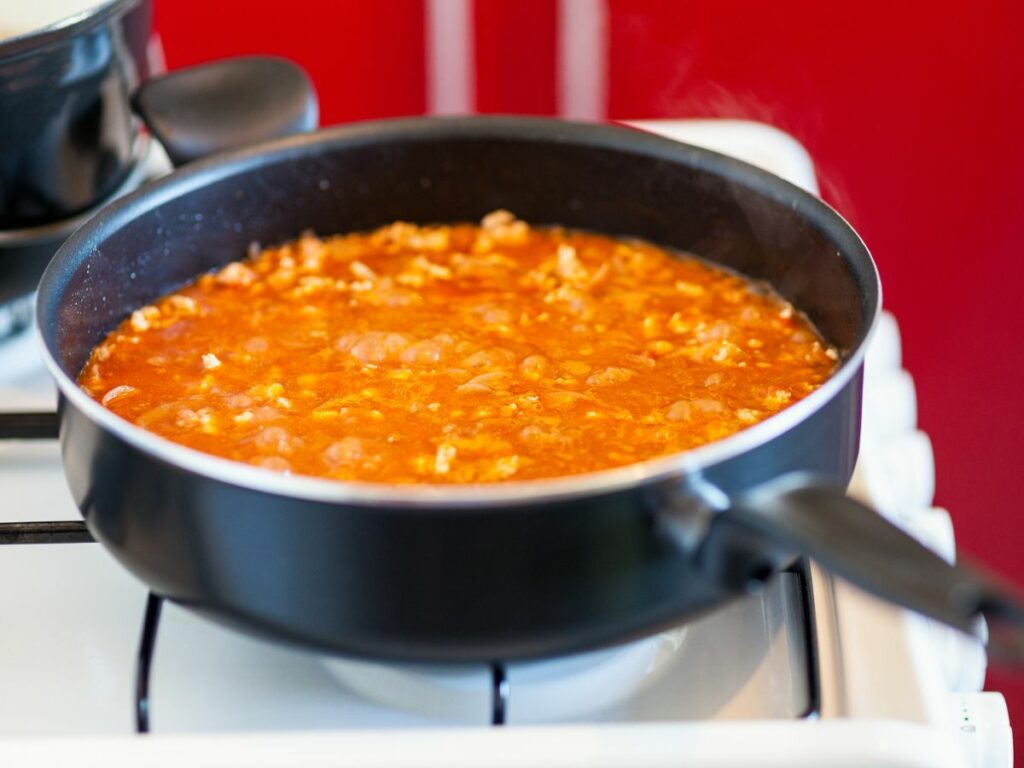
Which is Better: Sauté Pan vs. Frying Pan?
With all their differences, you might wonder which of these two common tools is the better choice. The answer depends on your needs, the type of dishes you cook most often, and the number of people you cook for.
Either the sauté pan or the frying pan could be the right choice for making everyday meals with a variety of cooking techniques. However, while a frying pan is a nice cookware for searing, frying, and browning food, it’s not as versatile as the sauté pan. There isn’t anything you can do with a frying pan that you can’t do with a sauté pan.
If you want one piece of equipment for a wide variety of purposes, I suggest buying a sauté pan. A sauté pan is great for feeding a family of four or more because it can cook a larger volume of food. However, if you need a trusty tool for daily staples like skillet meals and pancakes or eggs or are cooking small portions, a frying pan is a great option.
|
Primary Rating:
4.7
|
Primary Rating:
4.5
|
|
|
$44.95
|
|
Pros:
|
Pros:
|
|
Cons:
|
Cons:
|
- Wider range of cooking techniques
- High sidewall for sauces and liquid
- Effective with a high volume of ingredients
- Larger cooking surface
- Helper handle
- Lid
- Not good for flipping pancakes, eggs, etc
- Can be heavier
- Heats up more slowly
- Meets basic daily cooking needs
- Ideal for flipping pancakes, eggs, etc
- Best for quick cooking
- Lightweight
- Easy to clean
- Less versatile
- Smaller volume
- Smaller cooking surface
In Conclusion
This sauté pan vs. frying pan comparison shows how these two great cookware are similar and different from each other. Buying new cookware is always exciting and a little overwhelming for me because there are so many good options on the market. I hope this review is helpful as you make the best choice on the type of pan your kitchen needs most.

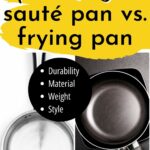
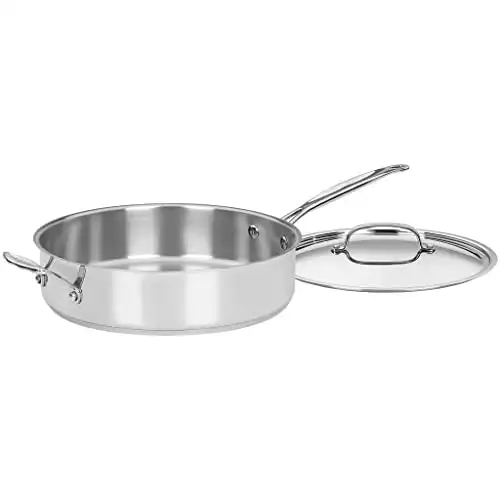
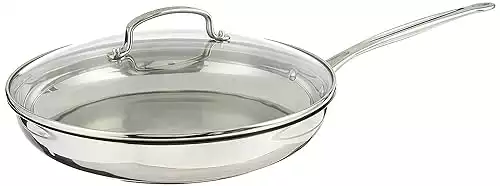
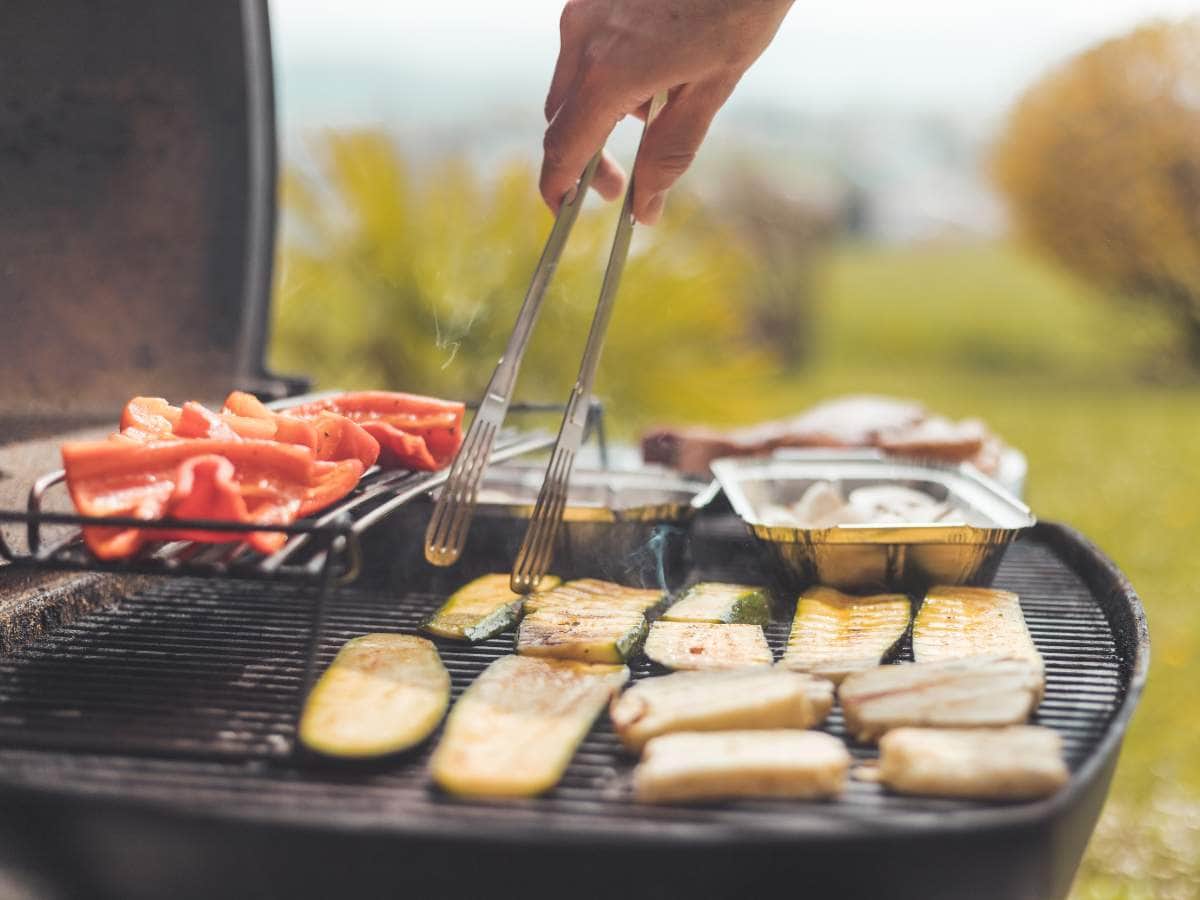
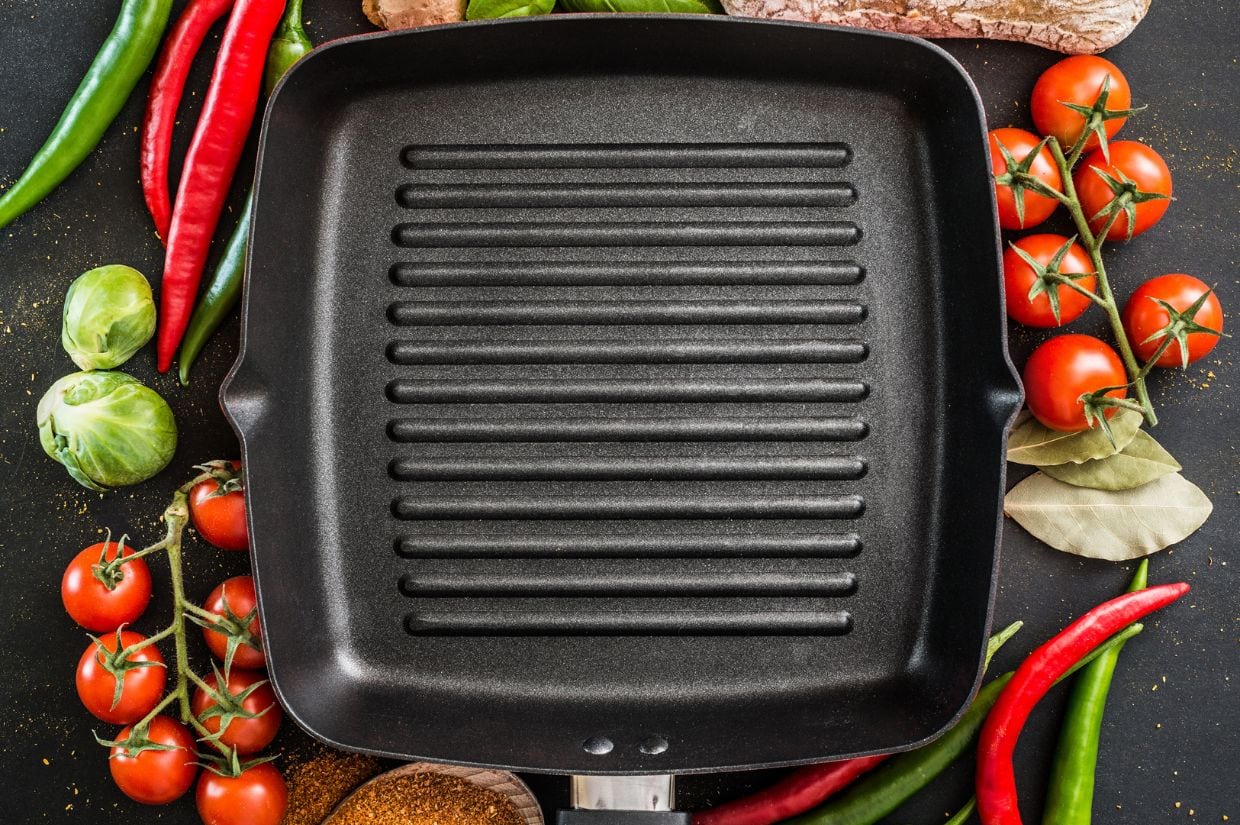
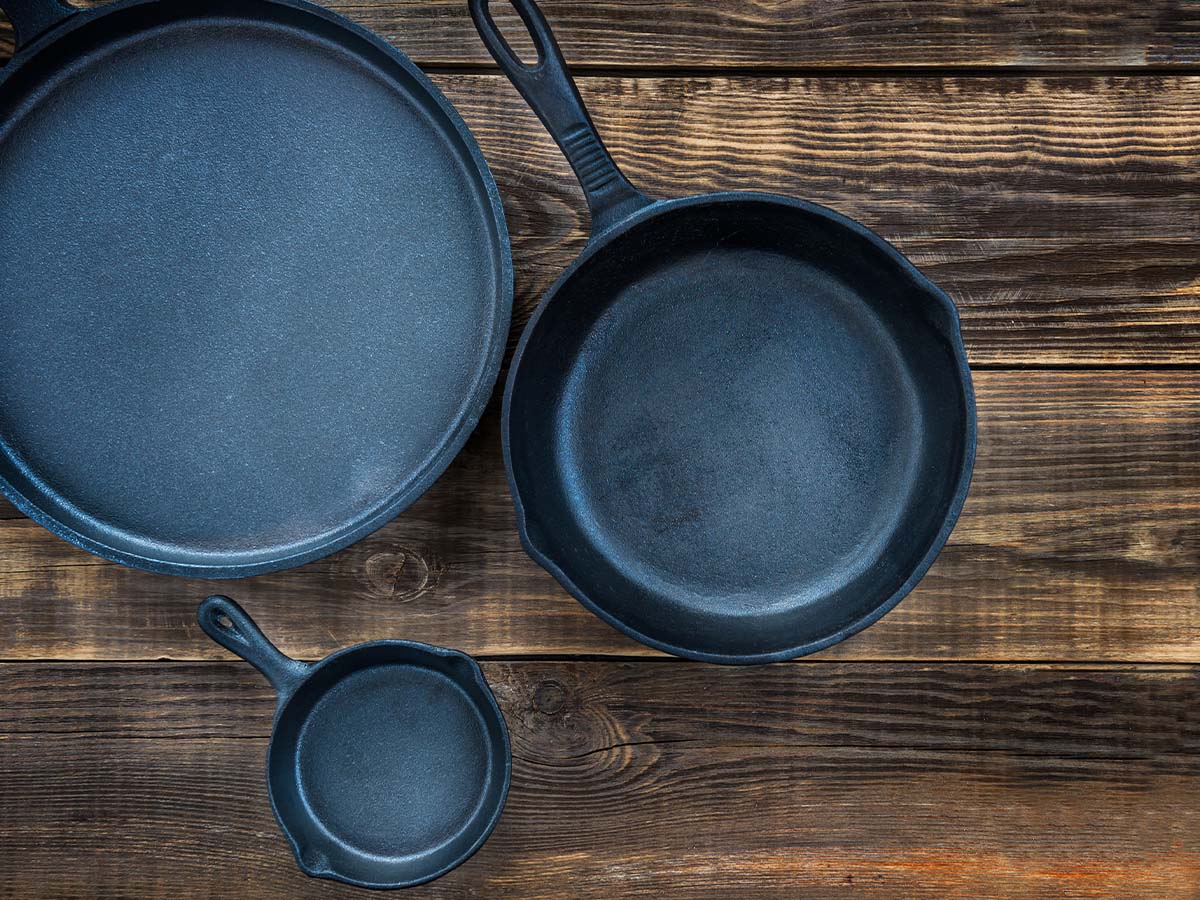
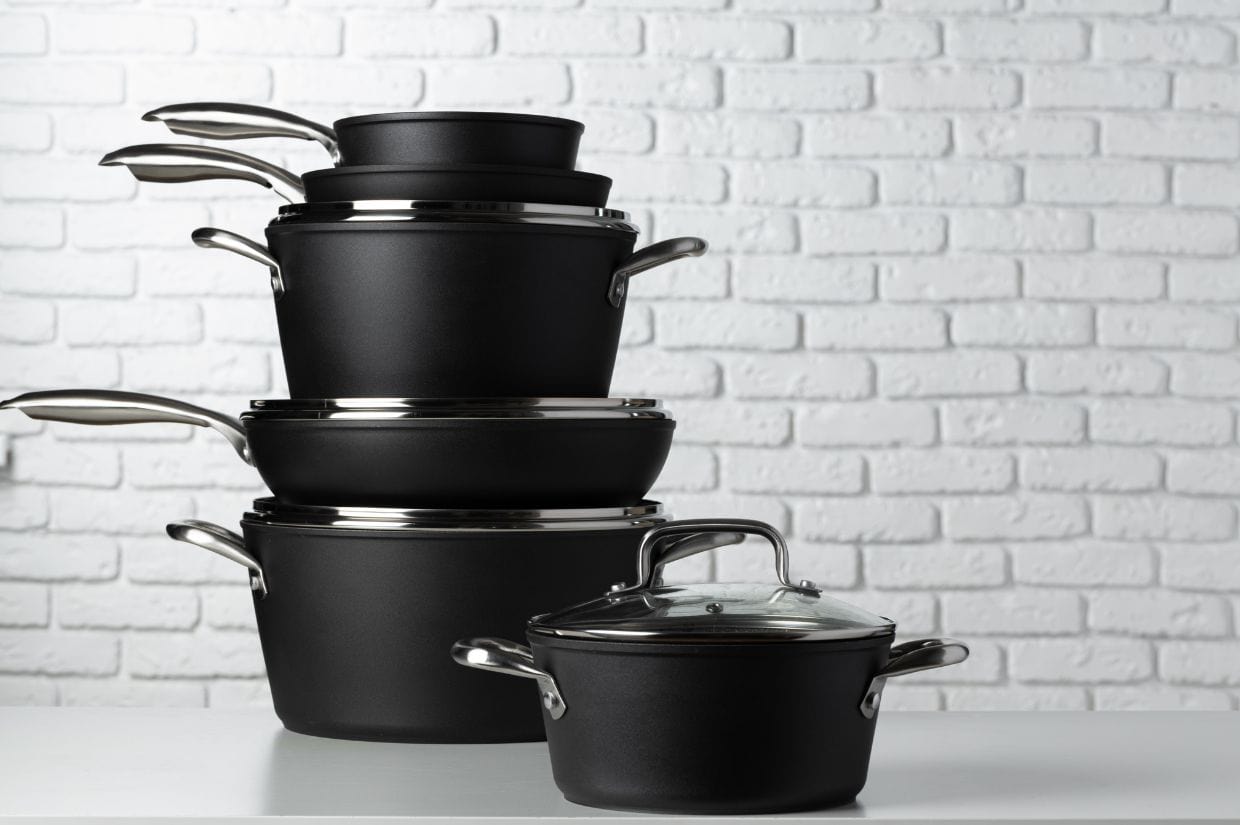
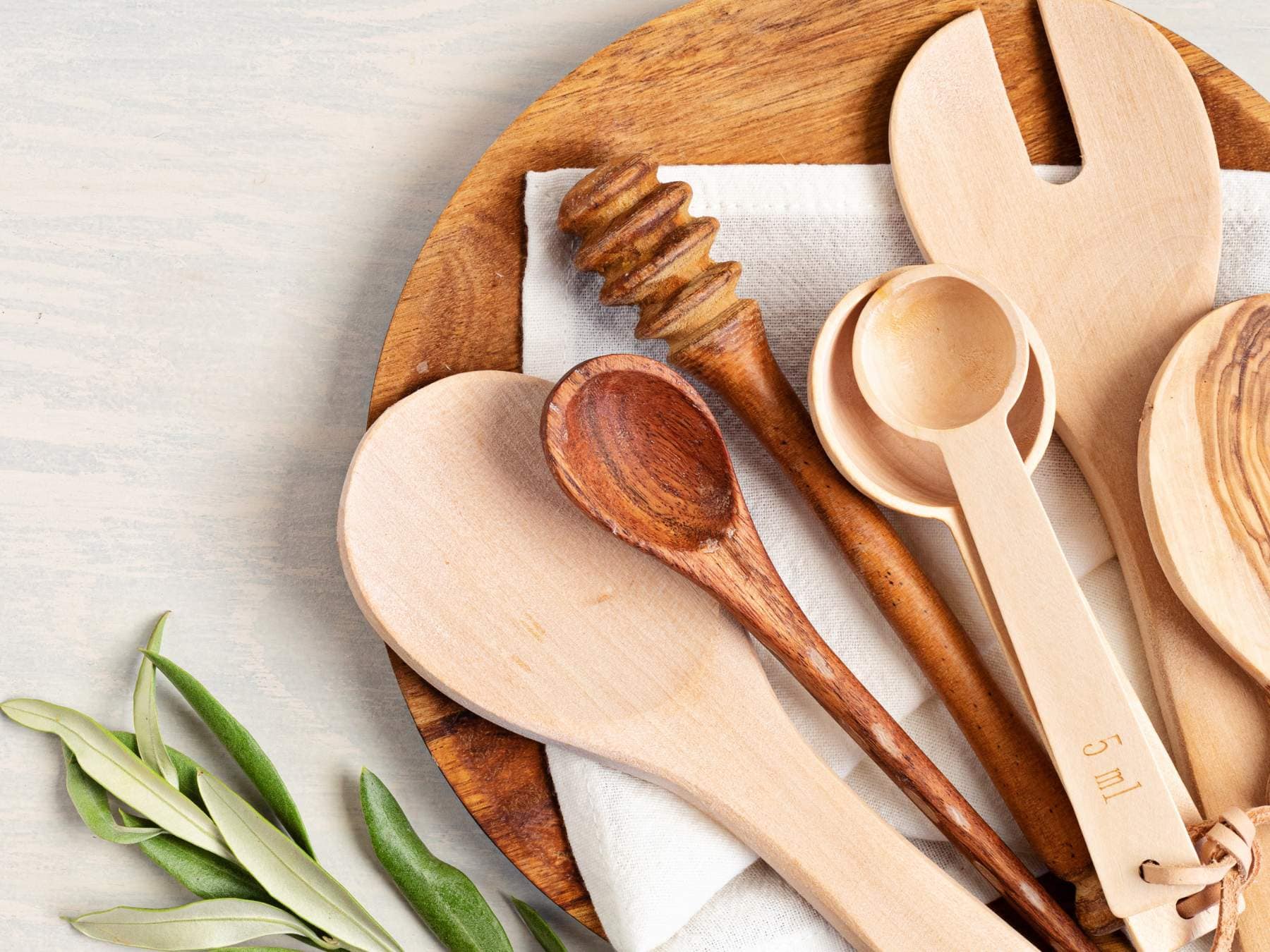
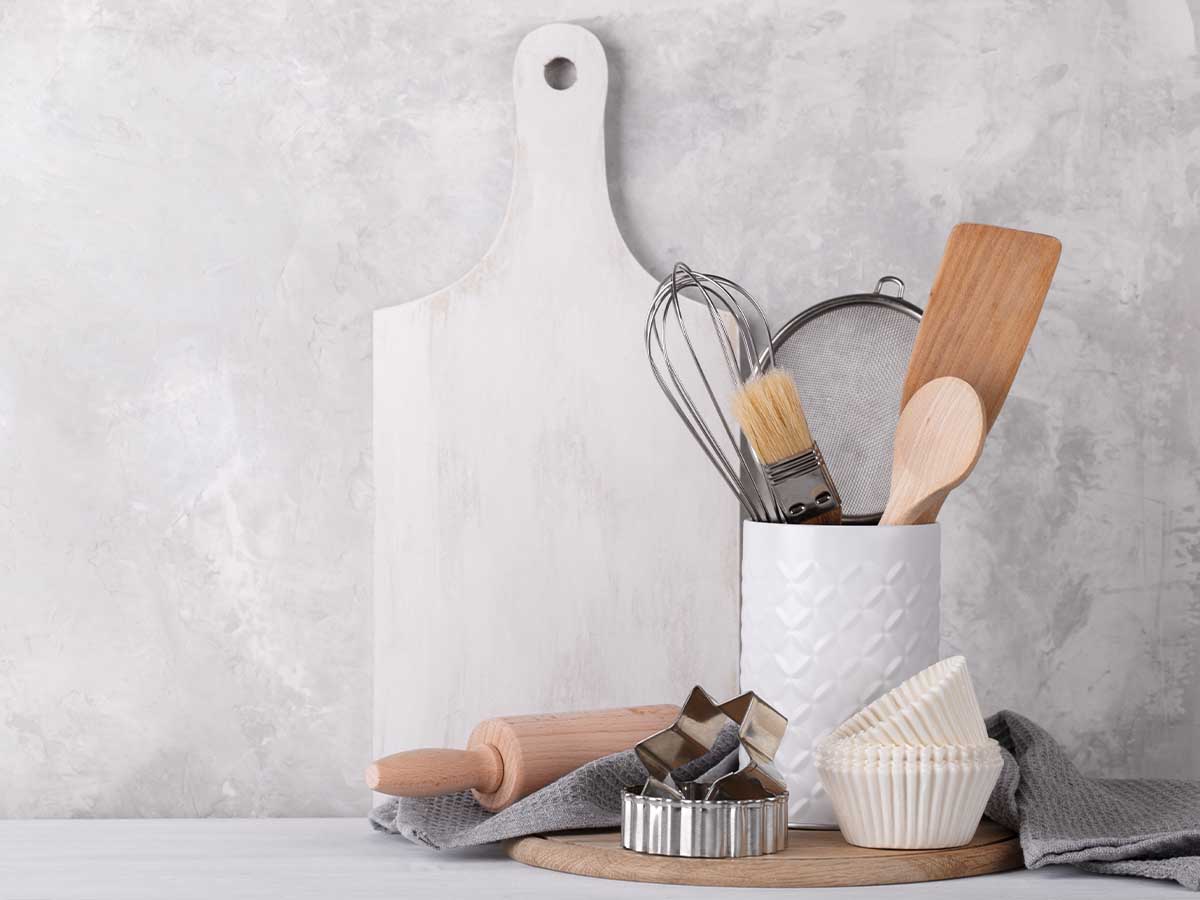
I’ve just recently gotten into cooking at home and learned a lot from this article. I purchased my first good knife with help from your post about knives, too!
Happy to hear the post was helpful to you, Mel. Home cooking is a great skill to learn. Enjoy!